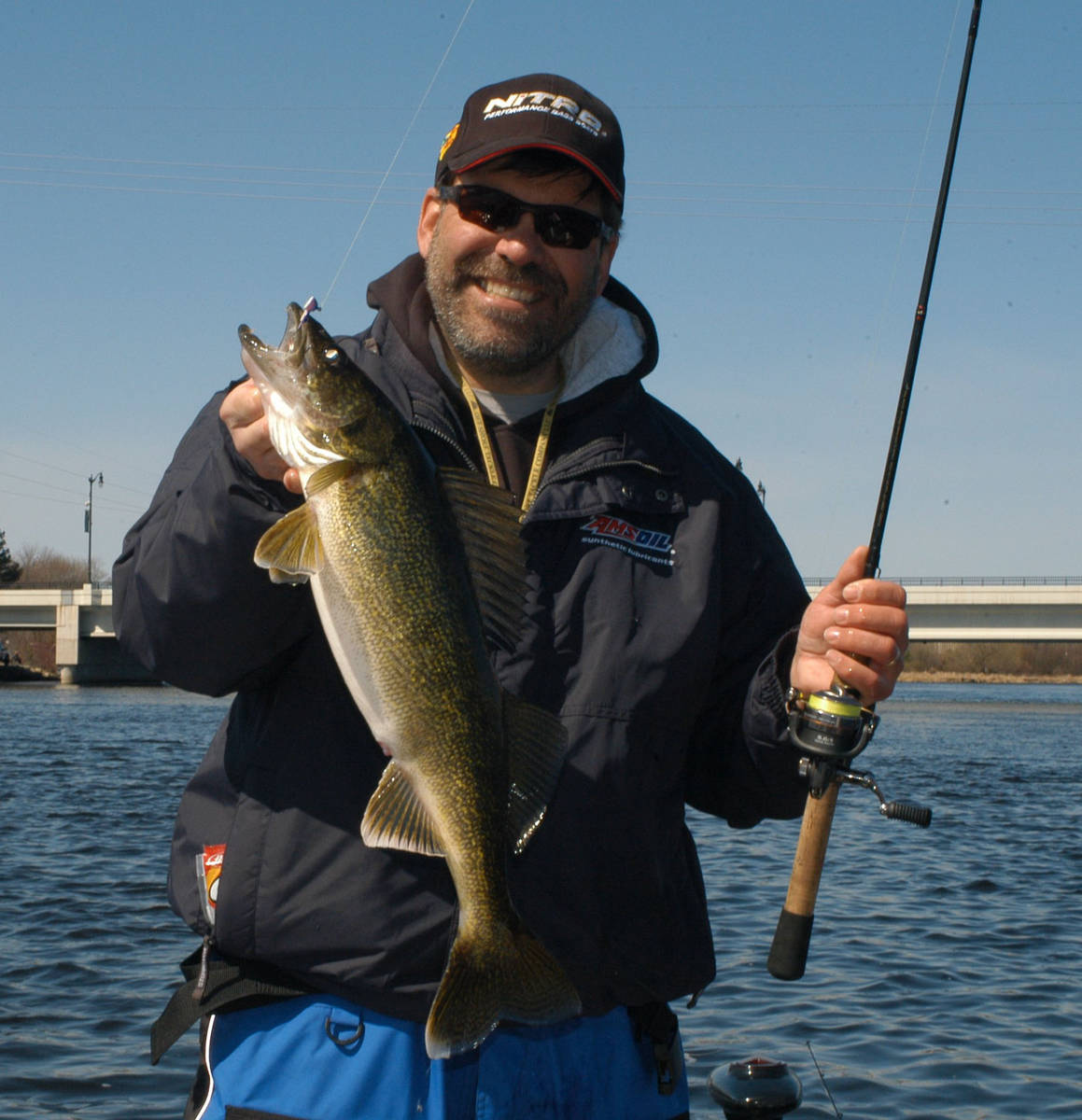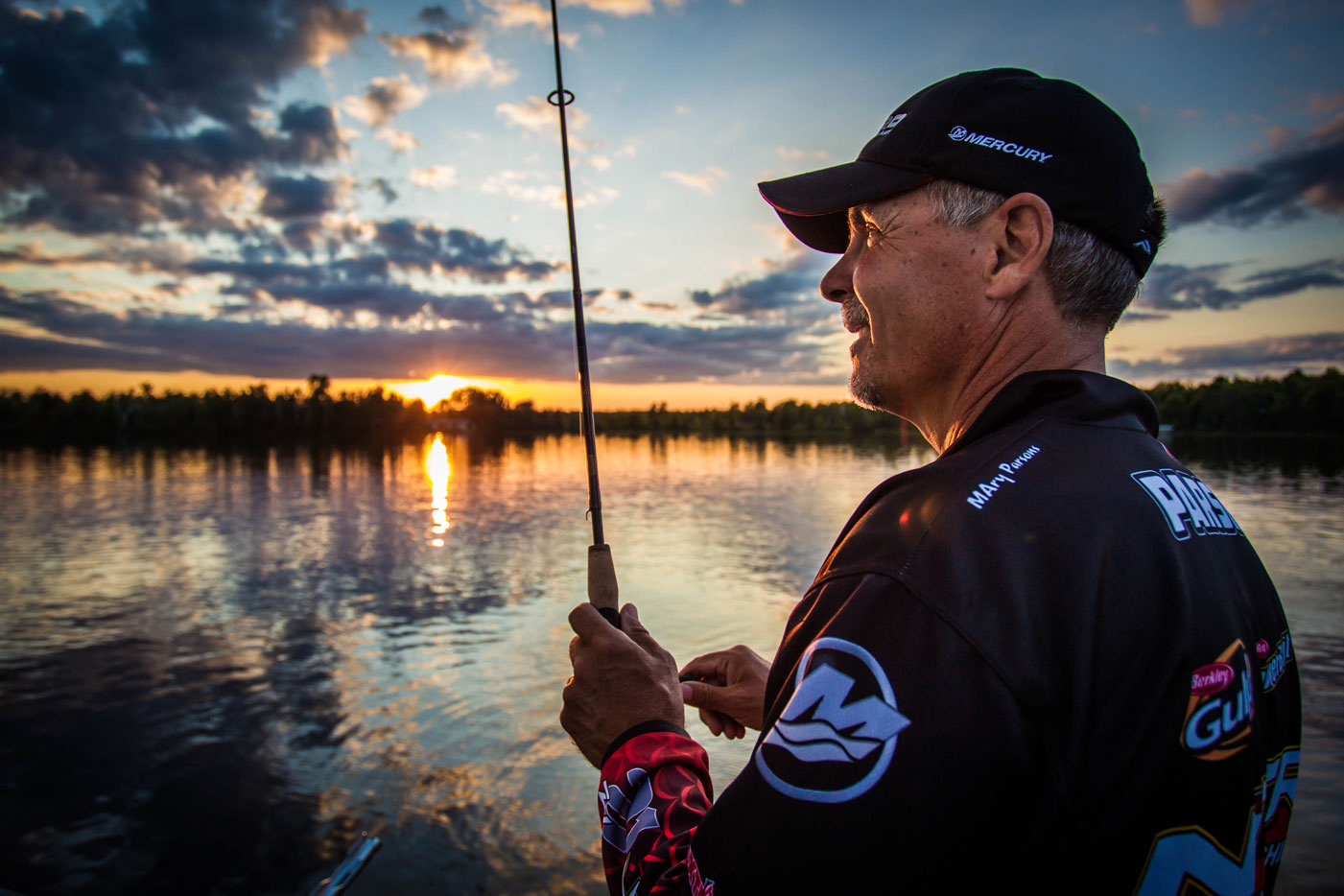 When you think of tactics for catching walleyes you might think of presentations like vertical jigging, trolling crankbaits, live bait rigging or running bottom bouncers and spinners; all solid techniques and highly effective under the right conditions. Seldom is the act of casting or pitching a lure from the front of the boat something most walleye anglers would think of – that’s what those bass and muskie guys do all day. But there are many situations where casting and/or pitching lures can be the absolute best way to catch walleyes and it’s a tactic that you need to add to your arsenal.
When you think of tactics for catching walleyes you might think of presentations like vertical jigging, trolling crankbaits, live bait rigging or running bottom bouncers and spinners; all solid techniques and highly effective under the right conditions. Seldom is the act of casting or pitching a lure from the front of the boat something most walleye anglers would think of – that’s what those bass and muskie guys do all day. But there are many situations where casting and/or pitching lures can be the absolute best way to catch walleyes and it’s a tactic that you need to add to your arsenal.
Walleyes are typically considered fish of deeper structures, but many times during the season, and especially in the early and late stages of the season, walleyes are in or near shallow water, making them vulnerable to a casting style presentation. It may be rock-strewn shorelines, shallow reef systems, weeds or even wood cover, but somewhere on your favorite body of walleye water there’s probably an area that this type of presentation will produce walleyes you haven’t yet tapped into.
It’s true that a walleye is a walleye, no matter where you find him, but walleyes are also very adaptable, and tend to relate to various bodies of water differently. Spring walleye location will be closely related to available spawning habitat. That habitat will vary depending on the type of water you are fishing. Remember too, early in the season, shallow water warms up first. This draws in the baitfish, which naturally attracts and congregates the walleyes.
On natural lakes and many reservoirs early season walleye location may center on rocky shoals with scattered weeds. The most productive spots will be on slow-tapering structures where the water warms quickly in the spring. Spots that also offer a barrier or obstruction that the walleyes can herd a school of baitfish into are worth checking out. It could be that first 2 foot drop off a shoreline, or the front face of a rock pile. It could even be a man-made structure like a sea wall that drops off into a couple feet of water or a riprap shoreline. Mid-lake reefs, rocky points and gravel bars at the mouths of incoming creeks, even shoreline wood and laydowns can be good spots to explore depending on the body of water. These types of areas concentrate walleyes early in the season because it’s the kind of structure walleyes use for spawning on many bodies of water as well as being where they actively feed.
As spring progresses into summer, the walleyes location will move, but not as far as you might think. On many bodies of water it is a short migration from the shallows to the outside edges of the structure, closer to deeper water. This may mean the outside weed edge, deeper stump flats or deeper edges of reef and rock structures where the transitions are a bit steeper.
As for what to fish with to target these fish, pitching a sixteenth to eighth ounce jig tipped with a minnow or artificial tail like a Berkley GULP! Minnow or Berkley PowerBait Minnow can be a dynamite pattern for catching early season fish. Jigs such as Bass Pro Shops’ XPS Walleye Jigs are great choices for this technique because they have a “semi-stand-up” design. This means that as the jig sits on the bottom, the hook is angled up, putting it in perfect position for a fish to inhale the offering and upping your odds of getting a good hook-up. Casting small cranks like the 5 cm or 6 cm Berkley Flicker Shad can be a dynamite tactic at times, particularly in areas where the lure can be worked over the top of newly emerging weeds, through sparse weed cover or bounced along shallow rocks. As the water warms and the fish move deeper on the structure, the jigs still work consistently although you may need to move up in weight a bit to a 1/8th ounce size. The crankbait bite, while occasionally productive, tends to taper off as these fish move out of the shallow water.

While bass anglers may favor medium heavy to heavy action baitcasting equipment for pitching jigs into cover, much more finesse style gear is preferred when pitching to shallow water walleyes. Six to seven foot, medium to medium light action spinning rods are much better suited for this style of angling. “Technique Specific” rods have become very popular in the rod building industry, and walleye anglers have reaped the benefits, now having equipment available to them designed especially for their style of fishing. Rods like the Bass Pro Shops Walleye Angler Signature Series model WA70MS-HM85 (7 foot, medium action) is ideal for jig pitching and casting light crankbaits and is well suited for longer casts and pulling hefty fish out of cover.
Line choice is also a key factor to the presentation. No-stretch lines like Berkley’s FireLine in 6 to 8 pound test offer the ultimate in sensitivity. The bite of an early season walleye can be very subtle, and using a line that telegraphs a light bite all the way to the angler’s fingertips is a real asset. Line color can sometimes be a factor as well. In clear water, the translucent characteristics of FireLine Crystal can add confidence to your presentation. However, in dingy water, where line visibility to the fish is not much of a factor, using a highly visible line like FireLine in Flame Green color can help you detect very light jig bites because you will be able to better see the line “jump” when a fish takes the bait. For casting cranks at night, the same lines work great, but some anglers prefer the castability of a mono like Berkley Trilene XL in 8 to 10 pound test. It’s a line that has been around forever, but with its improved formula, the new generation of XL is even more castable and tougher than ever.
If you’re looking for a great start to the walleye fishing season, don’t get caught up in thinking that the only game in town is vertical jigging, trolling or dragging a lure. Spend a little time really looking over your favorite walleye waters and there’s no doubt you’ll discover plenty of good areas where a pitching or casting presentation will help you get your Next Bite.










